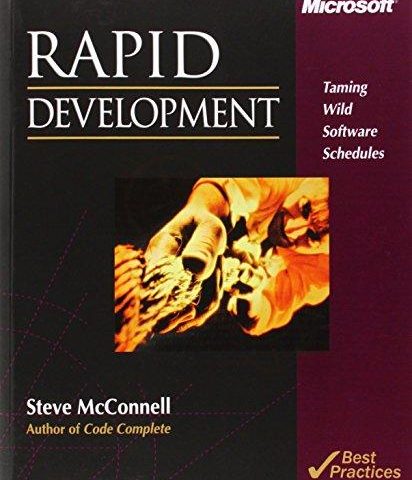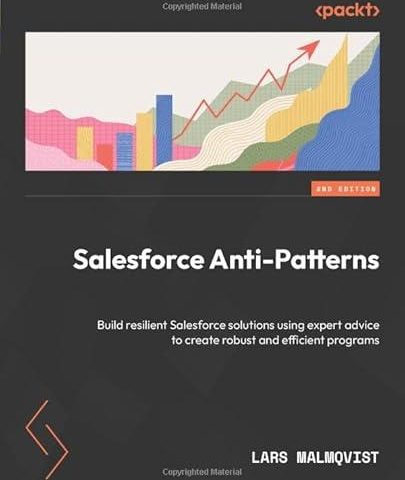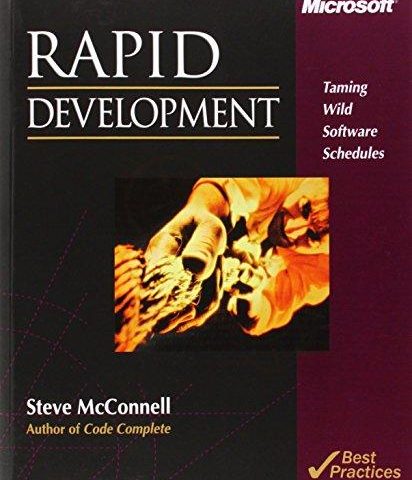In today’s fast-paced tech landscape, the constant evolution of software development practices can be overwhelming. For many of us working in the field, finding reliable resources that bridge the gap between theoretical constructs and practical application is crucial.That’s where “Modern Software Engineering: Doing What Works to Build Better Software Faster” comes into play. In this post, we will delve into our experiences with this thorough guide to contemporary software engineering methodologies. Through our collective exploration, we aim to unpack how this book distills key principles and techniques that can enhance our processes and improve our outcomes. Whether you are a seasoned developer or just beginning your journey, we believe this resource offers valuable insights that resonate with the realities of our work. Join us as we review its key themes, practical applications, and overall effectiveness in helping us navigate the complexities of modern software development.
Table of Contents
Overview of modern Software Engineering and Its Significance
Modern software engineering encompasses a set of practices and methodologies designed to enhance the quality and efficiency of software development. by applying **proven techniques** and embracing an **agile mindset**,we can streamline processes and minimize the time spent on project timelines. The focus on building software that meets real-world needs is paramount, thus driving the significance of this approach. Key aspects include collaboration, iterative development, and a strong emphasis on user feedback—elements that help us create **robust applications** that deliver value more effectively.
The significance of adopting contemporary practices is reflected in the measurable benefits we experience, such as improved team dynamics and faster delivery schedules. By integrating concepts like **Continuous Integration (CI)** and **DevOps**, we enhance our development pipelines, which fosters innovation and responsiveness to market demands. The following table summarizes the primary components that contribute to our success in software engineering:
| component | Benefit |
|---|---|
| Agile Methodology | Increased adaptability and responsiveness |
| Code Review Practices | Enhanced code quality |
| automated Testing | Faster error detection |
| User-Centric Design | Improved user satisfaction |
We believe that acquiring knowledge through resources that encapsulate these principles is essential for any aspiring software engineer. To dive deeper into these methodologies and apply their concepts for prosperous project execution,we encourage you to explore further.
Key Features and Innovations of Modern Software engineering
In our exploration of contemporary software development, we appreciate the emphasis on practical methodologies that prioritize efficiency and quality. **Agile practices** are highlighted as a core element, enabling teams to adapt quickly to changing requirements while ensuring consistent delivery of functional software. Moreover, the integration of **continuous integration and continuous deployment (CI/CD)** transforms how we handle releases, allowing for a smoother workflow and reducing the time between development and production. These innovations not only enhance productivity but also foster a culture of collaboration and feedback within teams.
another significant aspect we find compelling is the focus on **user-centered design** principles, which advocate for involving stakeholders from the initial stages of development. This approach helps in accurately capturing requirements and ensures that the final product aligns with user expectations. Furthermore, the incorporation of **automation tools** streamlines repetitive tasks, enabling developers to allocate more time to solving complex problems. Below is a comparison of conventional versus modern practices:
| Aspect | Traditional Practices | Modern Practices |
|---|---|---|
| Development Cycle | Waterfall Methodology | Agile Sprint Cycles |
| Integration | Manual Testing | CI/CD Automation |
| User Involvement | Post-Deployment Feedback | Ongoing Collaboration |
We encourage you to dive deeper into these innovations by exploring now. Discover the Book
In-Depth Insights on Implementation and Application
we found that the practical application of the methodologies discussed greatly enhances the software development lifecycle.Adopting these strategies facilitates a more streamlined approach to project management and team collaboration, allowing us to respond to changes dynamically. The emphasis on **agility** and **incremental delivery** is especially evident, prompting us to reconsider our workflows.Key implementations include:
- Continuous Integration (CI): Integrating code changes frequently helps us detect issues early.
- Automated Testing: This has drastically reduced our QA time,ensuring we deliver quality products faster.
- DevOps Practices: Blending development and operations has improved our deployment efficiency.
Moreover, the illustrations and case studies provided are invaluable, demonstrating how teams can tailor these practices according to their unique environments. We encountered a comprehensive table detailing various methodologies and their corresponding benefits, which has served as an effective reference for our agile transition efforts:
| Methodology | Core Benefit |
|---|---|
| Scrum | Improved team accountability and productivity |
| Kanban | Enhanced workflow visibility and efficiency |
| Extreme Programming (XP) | Greater adaptability to changing requirements |
The multifaceted approaches serve to not only streamline our processes but also to foster a culture of learning and continuous improvement within our teams. For those seeking to deepen their knowledge and skills in the ever-evolving field of software engineering,we highly recommend exploring further.Discover More Insights
Recommendations for Optimizing Our Software Development practices
To enhance our software development process, we should incorporate key principles that emphasize both flexibility and efficiency. **Agile methodologies** provide a framework that enables us to adapt quickly to changes without sacrificing quality. We can also benefit from **continuous integration and delivery** practices, which ensure that our code is always deployable and reduce the time between writing code and getting it into production. Additionally, we should consider implementing **automated testing** strategies that help catch issues early, significantly decreasing the turnaround time for fixes and maintaining high standards for our software.
| Practice | Benefits |
|---|---|
| Agile Methodologies | Increased adaptability and faster project turnover |
| Continuous Integration/Delivery | Minimized deployment error rates and quicker iteration cycles |
| Automated Testing | Early detection of bugs and reduced manual testing efforts |
Furthermore, we should prioritize incorporating **feedback loops** at every stage of our development process. Engaging regularly with stakeholders helps ensure that we are aligned with their expectations and allows us to incorporate their insights early. We should also focus on enhancing our **collaboration tools**, as effective communication within our teams is critical for ensuring that everyone is on the same page. Lastly, investing time in **retrospective meetings** can foster a culture of continuous improvement, where we refine our practices based on past experiences.
Customer Reviews Analysis
Customer Reviews Analysis
In our assessment of “Modern Software engineering: Doing What Works to build Better Software Faster,” we have gathered insights from various customer reviews to understand the overall reception of the book. Here,we aim to distill the feedback into key themes using an objective lens.
Overall Reception
From our analysis, the book has received a generally positive reception among readers. Many users have praised its practical approach and relevance to current software engineering practices. However, there are also some critiques that highlight areas for improvement.
Key Themes from Reviews
| Positive Aspects | Negative Aspects |
|---|---|
| Practical examples and case studies | Some concepts might potentially be too advanced for beginners |
| Clear and concise writing style | Lack of depth in certain areas |
| Applicable to diverse teams and projects | Occasional redundancy in content |
Reader Demographics
While reviewing customer feedback, we observed that the audience is quite varied, including both seasoned software professionals and newcomers to the field. This demographic diversity informs the range of opinions about the book’s effectiveness and execution.
| Reader Type | Feedback Summary |
|---|---|
| Experienced Engineers | Found the book highly relevant. Appreciated the up-to-date methodologies. |
| New Developers | Felt some chapters were challenging. Desired more foundational guidance. |
| Project Managers | Valued insights on team dynamics. Applied suggestions to project frameworks. |
Conclusion
our analysis of customer reviews suggests that “Modern Software Engineering” is regarded as a significant contribution to the field, particularly noted for its practical application and clarity. However, it simultaneously presents challenges to less experienced readers, indicating that while the book excels in specific areas, there is room for expansion and inclusivity in its approach. By considering these insights, potential readers can gauge how well the book may align with their needs and expertise levels.
Pros & Cons
Pros & Cons
In our review of “Modern Software Engineering: Doing What Works to Build Better Software faster,” we have identified several strengths and weaknesses that are crucial to consider. Below, we outline the key pros and cons of the book to help you make an informed decision.
| Pros | Cons |
|---|---|
| Provides practical guidance on current software engineering practices. | Some sections might potentially be too advanced for beginners. |
| Emphasizes real-world applications and case studies. | Could benefit from more illustrative examples. |
| Covers a wide range of topics relevant to modern software development. | Occasionally lacks depth in certain specialized areas. |
| Aids in improving team collaboration and productivity. | May not align with every institution’s unique workflow. |
| Well-structured and easy to navigate. | Some readers might find it lacks theoretical exploration. |
while “Modern Software engineering” presents valuable insights and methodologies for enhancing software development, it may not cater to all levels of expertise or organizational needs. We encourage potential readers to weigh these pros and cons to determine if the book aligns with their interests and goals in software engineering.
Embody Excellence
our deep dive into “Modern Software Engineering: Doing What Works to Build Better Software Faster” has provided us with significant insights into its applicability and relevance in today’s rapidly evolving tech landscape. We appreciate the blend of theory and practical advice presented by the authors, which can guide both newcomers and seasoned professionals in refining their software development practices. while the book has its strengths and limitations, its overall contribution to the modern software engineering dialog is significant.
We encourage you to explore this resource further for yourself. If you’re looking to enhance your software development skills and accelerate your projects, “Modern Software Engineering” could be a valuable addition to your library.
To learn more about the book and to make your purchase, click here: Modern Software Engineering: Doing What Works to Build Better Software Faster. Thank you for joining us in this review,and we look forward to sharing more insights in the future!






